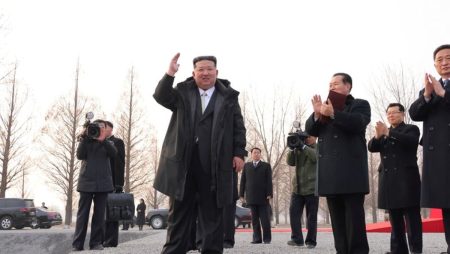The Decline in Marriages: A Growing Concern
Marriage rates in China have experienced a significant downturn, with a notable drop of 20% in the past year, marking the most substantial decline on record. This decrease has occurred despite various government initiatives aimed at encouraging young couples to marry and start families, efforts intended to mitigate the country’s declining population. The issue has become a pressing concern for authorities, highlighting the complex interplay of social, economic, and demographic factors influencing marriage decisions in China.
Economic Challenges and Their Impact on Marriage Rates
The decline in marriages can be attributed, in part, to economic instability and the rising costs of raising a family. High expenses associated with childcare and education have long been deterrents for young couples considering marriage. Additionally, recent economic sluggishness has exacerbated these challenges. University graduates face difficulties in securing employment, and those who do find jobs often experience insecurity about their long-term career prospects. These factors collectively contribute to ahesitancy among young adults to commit to marriage and parenthood.
A Closer Look at the Statistics
According to data from the Ministry of Civil Affairs, 6.1 million couples registered for marriage last year, a significant drop from 7.68 million the previous year. This reduction underscores the severity of the decline, especially when compared to previous years. Notably, even during the COVID-19 pandemic in 2020, when marriages decreased by 12.2%, the impact was less pronounced than the current downturn. The number of marriages has now fallen to less than half of the 13.47 million recorded in 2013, illustrating a concerning trend that shows no signs of reversal.
Expert Analysis and Historical Context
Demographer Yi Fuxian from the University of Wisconsin-Madison has highlighted the unprecedented nature of this decline, emphasizing that the current marriage rate is historically low. He warns that if this trend persists, it could undermine China’s political and economic ambitions, as the demographic challenges posed by an aging population and declining workforce threaten the nation’s stability and growth. The expert’s insights underscore the gravity of the situation and the need for effective policy interventions to address the root causes of the marriage decline.
The Broader Demographic Implications
China, with its population of 1.4 billion, is grappling with rapid aging, a consequence of a long-term decline in birth rates and an increasing median age. This demographic shift poses significant challenges for the country’s economic and social structures. With a shrinking workforce and an expanding elderly population, the government faces growing pressure to implement measures that encourage marriage and childbearing, ensuring the sustainability of its population and the continuance of economic development.
The Road Ahead for China’s Demographic Challenges
The Chinese government is acutely aware of the need to address the declining marriage rate and its broader demographic implications. As the population ages and the workforce diminishes, the urgency for policies that support young families and alleviate economic pressures grows. Whether through financial incentives, educational reforms, or employment security measures, the path forward requires a multifaceted approach to revitalize marriage rates and foster a sustainable demographic future. The success of these efforts will be pivotal in determining whether China can overcome its demographic challenges and continue its trajectory of growth and development.












